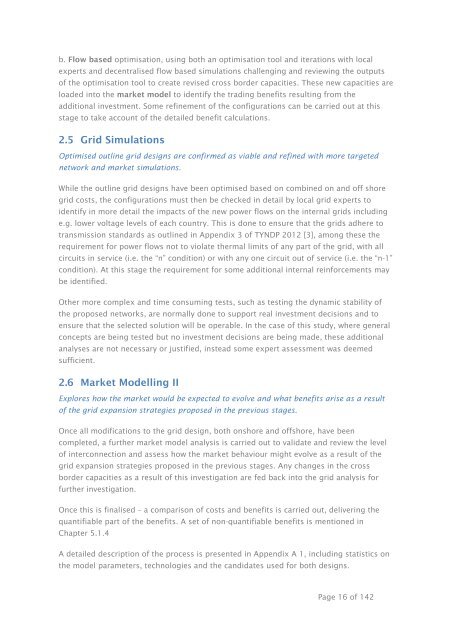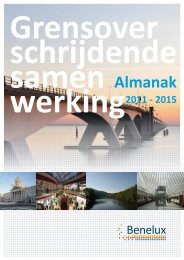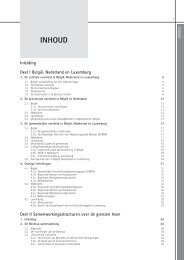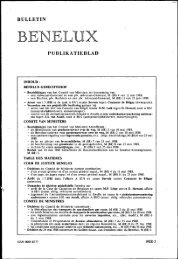The North Seas Countries' Offshore Grid Initiative - Initial ... - Benelux
The North Seas Countries' Offshore Grid Initiative - Initial ... - Benelux
The North Seas Countries' Offshore Grid Initiative - Initial ... - Benelux
You also want an ePaper? Increase the reach of your titles
YUMPU automatically turns print PDFs into web optimized ePapers that Google loves.
. Flow based optimisation, using both an optimisation tool and iterations with local<br />
experts and decentralised flow based simulations challenging and reviewing the outputs<br />
of the optimisation tool to create revised cross border capacities. <strong>The</strong>se new capacities are<br />
loaded into the market model to identify the trading benefits resulting from the<br />
additional investment. Some refinement of the configurations can be carried out at this<br />
stage to take account of the detailed benefit calculations.<br />
2.5 <strong>Grid</strong> Simulations<br />
Optimised outline grid designs are confirmed as viable and refined with more targeted<br />
network and market simulations.<br />
While the outline grid designs have been optimised based on combined on and off shore<br />
grid costs, the configurations must then be checked in detail by local grid experts to<br />
identify in more detail the impacts of the new power flows on the internal grids including<br />
e.g. lower voltage levels of each country. This is done to ensure that the grids adhere to<br />
transmission standards as outlined in Appendix 3 of TYNDP 2012 [3], among these the<br />
requirement for power flows not to violate thermal limits of any part of the grid, with all<br />
circuits in service (i.e. the “n” condition) or with any one circuit out of service (i.e. the “n-1”<br />
condition). At this stage the requirement for some additional internal reinforcements may<br />
be identified.<br />
Other more complex and time consuming tests, such as testing the dynamic stability of<br />
the proposed networks, are normally done to support real investment decisions and to<br />
ensure that the selected solution will be operable. In the case of this study, where general<br />
concepts are being tested but no investment decisions are being made, these additional<br />
analyses are not necessary or justified, instead some expert assessment was deemed<br />
sufficient.<br />
2.6 Market Modelling II<br />
Explores how the market would be expected to evolve and what benefits arise as a result<br />
of the grid expansion strategies proposed in the previous stages.<br />
Once all modifications to the grid design, both onshore and offshore, have been<br />
completed, a further market model analysis is carried out to validate and review the level<br />
of interconnection and assess how the market behaviour might evolve as a result of the<br />
grid expansion strategies proposed in the previous stages. Any changes in the cross<br />
border capacities as a result of this investigation are fed back into the grid analysis for<br />
further investigation.<br />
Once this is finalised – a comparison of costs and benefits is carried out, delivering the<br />
quantifiable part of the benefits. A set of non-quantifiable benefits is mentioned in<br />
Chapter 5.1.4<br />
A detailed description of the process is presented in Appendix A 1, including statistics on<br />
the model parameters, technologies and the candidates used for both designs.<br />
Page 16 of 142










